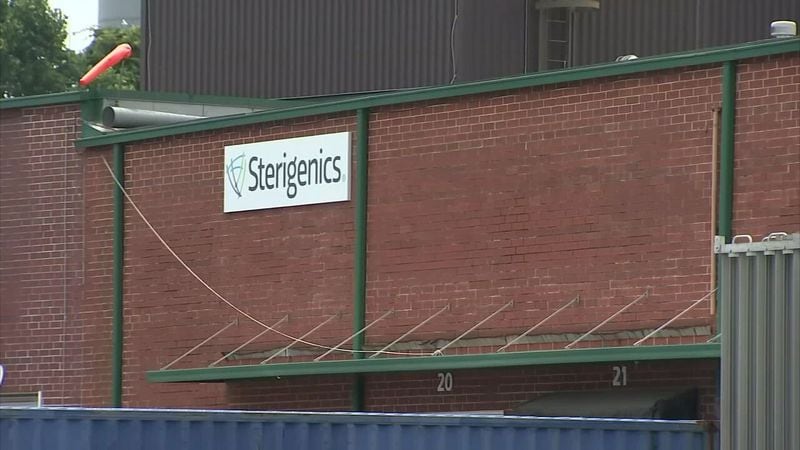The Environmental Protection Agency (EPA) finalized tighter standards and enhanced worker protections Thursday for medical sterilization facilities that use the colorless gas ethylene oxide (EtO), which has been linked to cancers and other serious health conditions.
The new federal rules come in the wake of concerns about the exposure of residents living near sterilization plants, including several in Georgia. In 2019, a report on federal modeling of ethylene oxide emissions and potential health impacts triggered outrage in metro Atlanta neighborhoods near sterilizers.
The updated rules will require facilities using EtO to install new controls to limit releases of the gas to the outside air and continuously monitor for leaks, among other requirements. The EPA says the changes will affect 88 sterilizers that are currently operating, plus two others under construction.
The tighter controls will phase in over the next three years, with facilities using more than 60 tons of ethylene oxide required to comply with the rules first. It was not immediately clear when the five commercial sterilizers in Georgia — which include Sterigenics in Smyrna, Becton Dickinson (BD) plants in Covington and Madison and Sterilization Services in Atlanta — would need to meet the new requirements.
The EPA says the regulations will reduce emissions from EtO facilities by 90% and protect residents living near them.
“We have followed the science and listened to communities to fulfill our responsibility to safeguard public health from this pollution – including the health of children, who are particularly vulnerable to carcinogens early in life,” EPA Administrator Michael Regan said in a statement. “We’ve arrived at a historically strong rule that will protect the most exposed communities from toxic air pollution while also ensuring that there will be a process that safeguards our nation’s critical supply of sterilized medical equipment.”
EtO plays a critical role in maintaining safety in medical and dental settings by killing dangerous bacteria that can’t be eliminated by other methods, like steam or radiation. About half of the medical devices used in the United States - approximately 20 billion devices each year — are sterilized with EtO. It is also used to kill potentially harmful microbes lurking in spices, dried vegetables, walnuts and other food products.
But the gas has been known for years to be dangerous to humans. In 2016, the EPA reclassified ethylene oxide as a human carcinogen and the gas has been linked to breast, lymphoid, leukemia and other types of cancers.
That same year, the EPA determined ethylene oxide is dangerous at much lower levels than previously thought.
Based on its new threshold, EPA air modeling flagged several census tracts in Georgia for potential elevated cancer risks from exposure to ethylene oxide in 2018. But neither the agency nor the state Environmental Protection Division (EPD) alerted the public.
A year later, media reports revealed the potential for increased cancer risk faced by residents in neighborhoods surrounding a plant in Smyrna operated by Sterigenics, one of the country’s largest medical device sterilizers with dozens of facilities around the U.S.
Sterigenics’ Smyrna plant is still in operation. In recent years, a wave of lawsuits have been filed over the emissions from the facility and the BD plant in Covington.
In a statement, BD spokesman Troy Kirkpatrick said the company is committed to safety and had already begun installing emissions control technology at its plants before the rule was finalized.
“We are currently reviewing the final rule in detail, and we will implement any additional actions that may be required as needed to comply with the final rule,” Kirkpatrick said.
Credit: ccompton@ajc.com
Credit: ccompton@ajc.com
Sterigenics did not immediately respond to a request for comment. Last year, Sterigenics agreed to pay $35 million to settle dozens of claims from residents living near their Smyrna plant who alleged they were exposed to EtO.
Janet Rau, the president of Stop Sterigenics Georgia who lives and works at a school a few miles from the Smyrna Sterigenics facility, said she was pleasantly surprised by how strong the rule is. She credited a large, coordinated national advocacy movement.
”There are groups like ours literally all over the country,” Rau said. “The people nationally who’ve been working on this with us are amazing at making sure that every connection, every person that had a word in this process heard from us in a major way.”
More ethylene oxide regulations could be coming soon. The EPA said Thursday it will finalize new rules for chemical facilities that produce the gas themselves in the coming weeks.
The AJC’s Taylor Croft and Meris Lutz contributed to this report.









